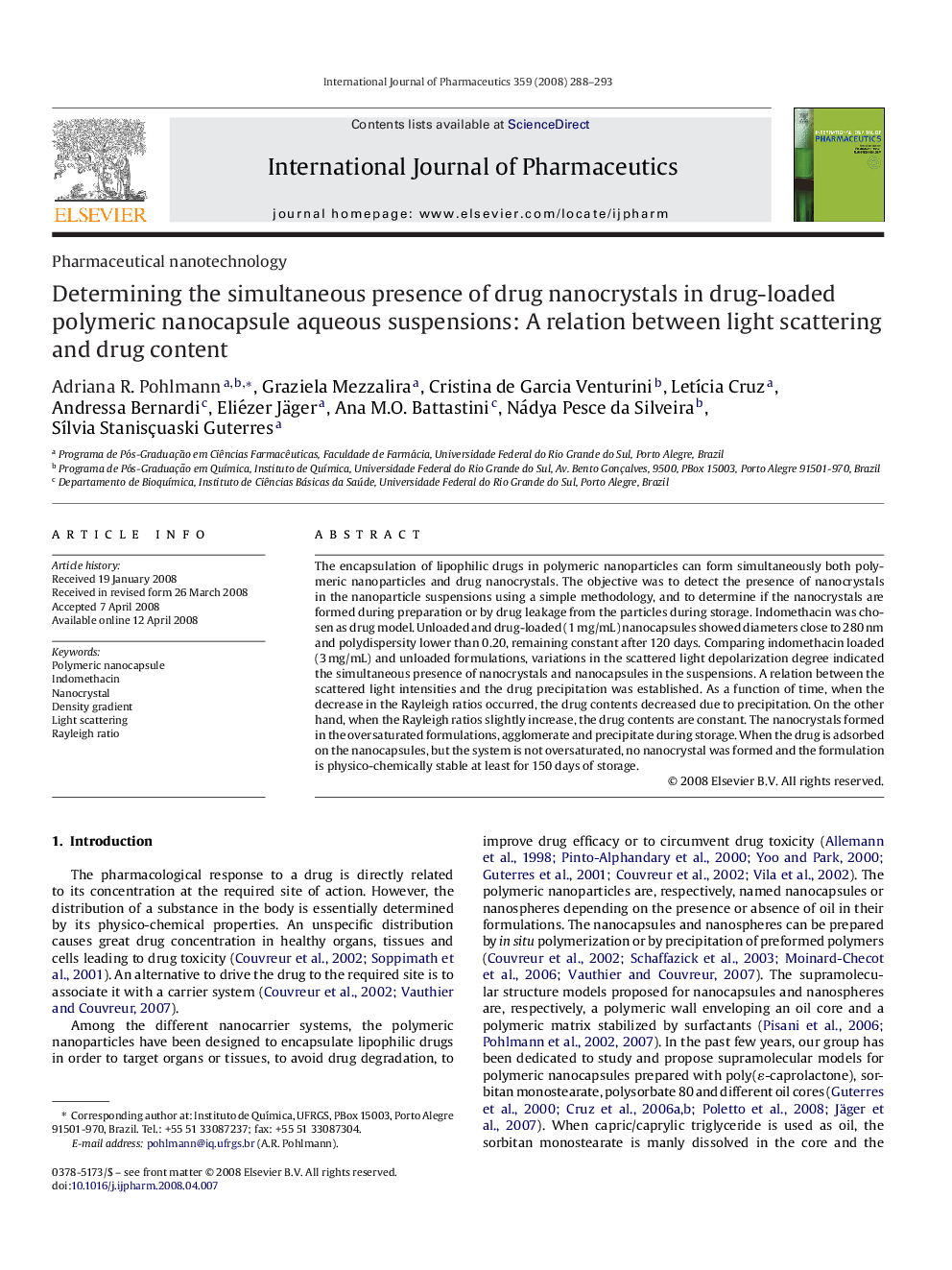| Article ID | Journal | Published Year | Pages | File Type |
|---|---|---|---|---|
| 2505367 | International Journal of Pharmaceutics | 2008 | 6 Pages |
The encapsulation of lipophilic drugs in polymeric nanoparticles can form simultaneously both polymeric nanoparticles and drug nanocrystals. The objective was to detect the presence of nanocrystals in the nanoparticle suspensions using a simple methodology, and to determine if the nanocrystals are formed during preparation or by drug leakage from the particles during storage. Indomethacin was chosen as drug model. Unloaded and drug-loaded (1 mg/mL) nanocapsules showed diameters close to 280 nm and polydispersity lower than 0.20, remaining constant after 120 days. Comparing indomethacin loaded (3 mg/mL) and unloaded formulations, variations in the scattered light depolarization degree indicated the simultaneous presence of nanocrystals and nanocapsules in the suspensions. A relation between the scattered light intensities and the drug precipitation was established. As a function of time, when the decrease in the Rayleigh ratios occurred, the drug contents decreased due to precipitation. On the other hand, when the Rayleigh ratios slightly increase, the drug contents are constant. The nanocrystals formed in the oversaturated formulations, agglomerate and precipitate during storage. When the drug is adsorbed on the nanocapsules, but the system is not oversaturated, no nanocrystal was formed and the formulation is physico-chemically stable at least for 150 days of storage.
